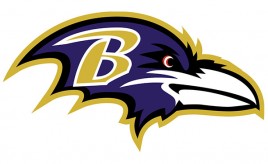There have been a lot of grumblings about the passing game on the boards, so I thought I'd write up a quick dump of what I think I know of the short passing game. These are basically my steps to not make the passing game miserable to watch.
Why the short passing game? Because most of the time, really like >80% of the time, short passes are perfectly acceptable and even desirable to run. Short passes get the ball out quickly, typically get it to your best receiver, and let your receiver do the work. Medium and long passes are great, but if you don't need 10-15 yards, why target 10-15 yards.
QB and Receiver LogicA must to understanding the short passing game is understanding basic QB and receiver logic. I'll not touch on any of the advanced things like hot reads or any of that and why INT is more important to QBs than Accuracy or why INT is more important to WRs than Catching (both of these seem to be true).
1)
QBs wait until a receiver has finished a route to throw.a) Memorize this. Say it 100 times. Write it on the bathroom mirror. Wake your spouse up in the middle of the night screaming it. Whisper it in your lover's ear...no, too much. … In all seriousness, this is the MOST IMPORTANT thing to remember about passing. You need to plan your passing plays around this concept. More on that below.
2)
Receivers come back to the QB after finishing their route if their route has them run parallel to the LOS and they “touch” the sideline OR if their route has them turn back to the QB with some exceptionsa) Confused? Good. I'll use the route section below to explain.
Specific Routes Good and BadHook/Curl vs Quick HookLet's jump right into confusing #2 above. What does it mean to come back to the QB?
A hook or curl route in this case has the receiver >5 yards past the LOS and then turn back to the QB for the pass. In this case, the receiver is going to hit logic number 2 and continue to run back to the QB, which will end the route usually at or behind the LOS for a negative yardage reception. The reason for this is QB logic #1. Verdict: DON'T USE HOOK ROUTES.
A quick hook has the receiver run <3 yards (remember the heart, do it) from the LOS and then turn back to the QB for the pass. Here's where things get wacky. Logic #2 dictates that the receiver should continue to the QB, but he's already at the LOS. So instead, the receiver holds positions and then turns upfield again. Since QB logic #1 says wait until the receiver is done running the route, the QB holds the ball until the receiver has turned back up field and then throws it to the streaking player. TE quick hooks destroy LBs for this reason. Verdict: USE THESE INSTEAD OF HOOKS.
The Drag RouteReceiver logic #2 also plays havoc with drag routes. Here's a good rule of thumb: if the drag goes to the middle of the field, it's OK to use. If the drag goes to the sideline, use caution.
Drag routes that go to the middle of the field are OK because receiver logic #2 doesn't come into play. Instead, the receiver runs across the middle of the field. Since QB logic #1 dictates the QB hold the ball, the receiver can usually hit the hole in the middle of the field between the DL and LBs for a nice 3-5 yard gain that he can sometimes bust open.
Drag routes that go to the sideline are interesting. I don't recommend them as the main route on a play, but as a secondary route they are OK. What happens is that the receiver runs to the end of his route and then turns around and runs back the other way because of receiver logic #2. The turnaround causes the receiver to slow to a crawl. For this reason, you don't want to use the 122 TE drag anymore. The play used to be good for 5-10 yards because the TE would run all the way to the sideline and be open for the pass. Now, the play is a drive killer because the TE turns around and runs smack into the trailing LB.
The only drag route to the sideline that is effective is the 113 slot receiver drag that runs under the flanker's slant route. On this play, the slot will run to the end of his route and turn around and then run under the slant route. VERDICT: USE SOME, NOT OTHERS
The Slant Route, the Awesome RouteSaving the best for (next to) last. The slant route is awesome simply because it does not suffer from receiver logic #2. Instead, the receiver continues running the same direction he was running when the slant route ended. Since QB logic #1, this means the 5 yard slant route is really a 7-10 yard passing play because of how the QB holds the ball. VERDICT: DOMINATE
Running Back RoutesDon't forget about short passing plays that target running backs. Running back routes don't suffer from receiver logic #2, so they will turn upfield when their routes end. This allows them to get big gaining passing plays from the backfield because of QB logic #1. The swing and wheel routes work particularly well. And, yes, it is possible to have 1000/1000 Marshall Faulk-type running backs if you use the right passing plays. VERDICT: DON'T FORGET
General ReminderIt's good to always remember that because of QB logic #1 that short passes are not really that “short.” Instead, the slant routes are really medium passes. If you're not emphasizing short passes, you're missing out on a lot of yardage opportunities.
For previous threads on passing, look for my more snarky Pass 90 thread.
Last edited at 8/19/2017 12:27 pm




